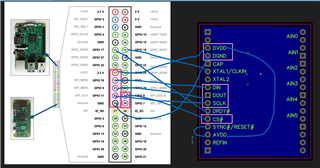Greetings,
i'm currently in getting used to my first SPI-ADC for my Thesis.
The Problem i bumbed into is that i'm able to send and receive messages to the ADC but i can not locate how much data per received Message is send. Also i'm not able to get the information on which bits of the received message which data is coming in. The Datasheet says in the chapter "Typical communication frame" that there is a Frame where always the Data from the analog-channels is send and the following answer from the rreg command. Here is where my Problem kicks in. How can i get the quantity of bit's per message out of the datasheet to receive "everything" in the next message.
For context i'm waiting for the !DRDY Pin before i receive and send data. My MCU is a RaspberryPi 3B+ and the Masterlclock is given with 2048000 Hz from a PWM-Pin from it. I'm using the SPIDEV library to accumulate the communication frames.
Help would be really appreciated, open source forums where not really helpful and i'm stuck on this problem for like 2 weeks.
Thanks in advance,
C. Naumer




